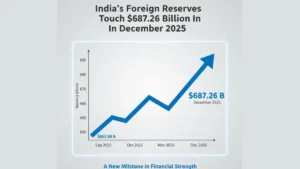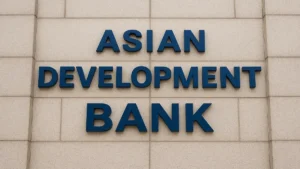India’s retail inflation moderated to 5.48% in November from 6.21% in October, marking a significant decline driven by easing food prices, particularly vegetables. This shift brought inflation back within the Reserve Bank of India’s (RBI) target range, raising expectations of a potential rate cut in early 2025. Additionally, industrial production showed positive growth, adding to the optimism for the economy. However, core inflation and volatile food prices remain concerns.
Decline in Food Inflation
Food inflation, a key driver of overall CPI, fell to 9.04% in November from 10.87% in October, primarily due to lower vegetable prices, which cooled from a high 42% in October to 29% in November. Despite the decline, categories like potatoes, carrots, and garlic showed persistent double-digit inflation, reflecting the continued volatility in food prices.
Factory Output Growth
Industrial output rose to 3.5% in October, driven by strong growth in manufacturing, particularly consumer durables and garments. This positive outcome in manufacturing aligns with festival demand, though concerns remain about core sectors like mining and electricity, indicating underlying challenges in the broader industrial landscape.
Rate Cut Speculation
The easing inflation, combined with a healthy industrial output, has rekindled speculation about the RBI cutting interest rates in February 2025. Economists suggest that if inflation stays below 5% in December 2024, a rate cut will be highly probable. While the RBI’s stance on inflation remains cautious, particularly with core inflation and food price volatility, favorable monsoon conditions are expected to ease food inflation in the coming months.
Future Outlook
Experts anticipate further moderation in inflation, potentially bringing it closer to 4% by FY25, but warn that global factors and food price fluctuations could still pose risks. The RBI’s decision will depend heavily on December’s inflation data, with analysts predicting a slight decline to around 5%.
Summary of the news
| Topic | Key Points |
|---|---|
| Why in News | India’s retail inflation eased to a 3-month low of 5.48% in November 2024, driven by a fall in food prices, especially vegetables. Retail inflation in October 2024 was 6.21%, the highest in 14 months. |
| Retail Inflation Data | November 2024: 5.48% (eased); October 2024: 6.21% (14-month high). |
| Food Inflation | Declined from 10.87% in October to 9.04% in November 2024. |
| RBI Inflation Target | Maintains a tolerance band of 2%-6% for inflation management. |
| CPI Weightage | Food accounts for 40% of the Consumer Price Index (CPI). |
| Vegetable Prices | Primary driver for the easing of inflation in November 2024. |
| Static Points | RBI Governor: Sanjay Malhotra; Headquarters: Mumbai; Founded: 1935. |



 Retail Inflation Rises Slightly to 0.71%...
Retail Inflation Rises Slightly to 0.71%...
 India’s Foreign Reserves Touch $687.26 B...
India’s Foreign Reserves Touch $687.26 B...
 ADB Raises India’s Growth Forecast to 7....
ADB Raises India’s Growth Forecast to 7....







